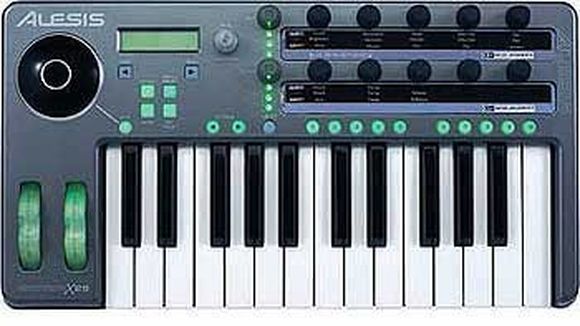2. What is a master keyboard?
In simplest terms a master keyboard guides the sounds to your equipment using MIDI - a sort of creative control center used to play your own sounds in the sequencer or as a control unit for your sound modules or cards.
A master keyboard normally offers very few built in sounds if it offers any at all. Instead the focus is on easily useable keys, buttons, and other controls for MIDI such as sound selection, pitch bend, modulation, volume, etc.
Music teachers often suggest their students switch to a good keyboard as soon as possible or simply start with a piano keyboard as it is extremely important for learning proper playing technique. For this reason those who work mostly with MIDI recording are increasingly opting for sound modules instead of fully equipped keyboards. Because the money that is saved by purchasing the modules makes up about half the price of a good master keyboard with weighted keys.
The same conclusion is often reached by people who have experienced how prone to issues the keys of some synthesizers are when compared to the other elements. That is to say: when something breaks it’s usually a key. When this happens you usually have to send the entire device in for service. During this time it isn’t possible to even play pre-recorded songs because your sound generator is missing!
Regardless of which reason has led you to choose a master keyboard you should keep your fingers away from keyboards with mini keys! Learning to properly play on one is nearly impossible. These models are meant for vacations, the street and for those with a shortage of space but not as a main keyboard.

USB/MIDI Controller Keyboard Alesis Photon X25
Apropos shortage of space: Recently there have been more and more models entering the market with only 25 keys - these have full size keys though and come with a considerable number of controls considering their size. These should be particularly interesting for those short on space (as mentioned) or for people who travel a lot but don’t want to compromise on key feel. While they are still no replacement for a full size one these mini-midi-keyboards can be used to record a quick chord or tune.




